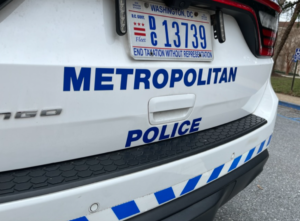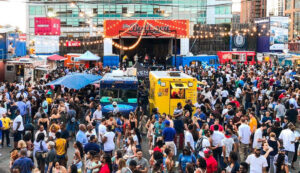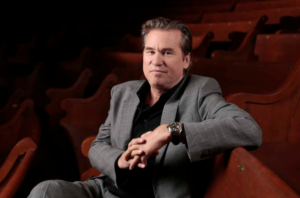History of Queen Anne’s Revenge Hosted by the Department of Anthropology
By Caroline Carr
Catholic University’s Department of Anthropology hosted an event introduced by a real-life pirate, otherwise known to the student body as anthropology professor David Clark, who dressed up for the event in a pirate bandana, eyepatch, gold earring, and goonies t-shirt. The lecture, titled “The Story of Blackbeard’s Shipwreck Queen Anne’s Revenge” took place on March 27th in the Pryzbyla Center and featured the speaker’s new book Blackbeard’s Sunken Prize. The event discussed in detail a shipwreck that was proven to be the Queen Anne’s Revenge and the artifacts that were discovered among the remains.
Clark described how he used to teach Wilde-Ramsing, the speaker of the event, as a Master’s student and how proud he is of his accomplishments. Wilde-Ramsing then began to speak about the event itself.
Blackbeard, otherwise known as Edward Thatch, was born in England, served in the Royal Navy as a young man, later became a privateer, and finally turned to piracy. The ship that later became the Queen Anne’s Revenge was previously named the Concorde. The Concorde was a well-armed privateer intended for warfare that was used to pick up over 500 slaves from Africa before it was taken by Blackbeard in 1717. Blackbeard kept 150 slaves, a pilot, a cannoneer, 110 French men, surgeons and other people aboard the Concorde.
Blackbeard changed the name to the Queen Anne’s Revenge and begin attacking other ships in order to create a naval force that could rival the British navy. In 1718, Blackbeard used this power to hold the city of Charleston for ransom demanding a quarter of a million dollars and a chest of medicine. He and his crew travelled to the Beaufort inlet later that year and attacked Ocracoke Island, hoping to profit off of the flourishing colony. There, Blackbeard fought his last battle.
“It is exciting that there is a book based on archaeological fact because it is all romanticized,” said Clark, a professor of anthropology at Catholic University. “But we learn it is daily or ordinary life of the pirates that is the greatest thing, the turning of fiction into fact is the greatest thing.”
After Wilde-Ramsing recounted the background of both Blackbeard and the Queen Anne’s Revenge, he discussed how the ship was discovered in 1996 by a private company and how it is now a nationally protected site because of its historical value. He also spoke about the various artifacts they discovered among the remains.
The faunal analysis conducted by Clark confirmed that the pirates ate poor cuts of beef, had pigs aboard the ship, and that the ship was infested with rats. Archaeologists also discovered material evidence analyzed by the co-author of Blackbeard’s Sunken Prize, Linda Carnes-McNaughton, including artifacts that were specific to the individuals aboard the ship. For example, surgeons lived on the ship and archaeologists discovered medical supplies such as syringes, a mortar and pestle, and a porringer or a vessel used for blood letting. Additionally, they found an iron hook wrapped in rope associated with shackles used to restrain slaves.
These artifacts and many others illustrate the movement of this famous ship and the daily life of those who inhabited it. This resounded with the audience when Wilde-Ramsing ended the lecture by playing the sound of a bell found in the wreckage on Blackbeard’s infamous ship The Queen Anne’s Revenge.







